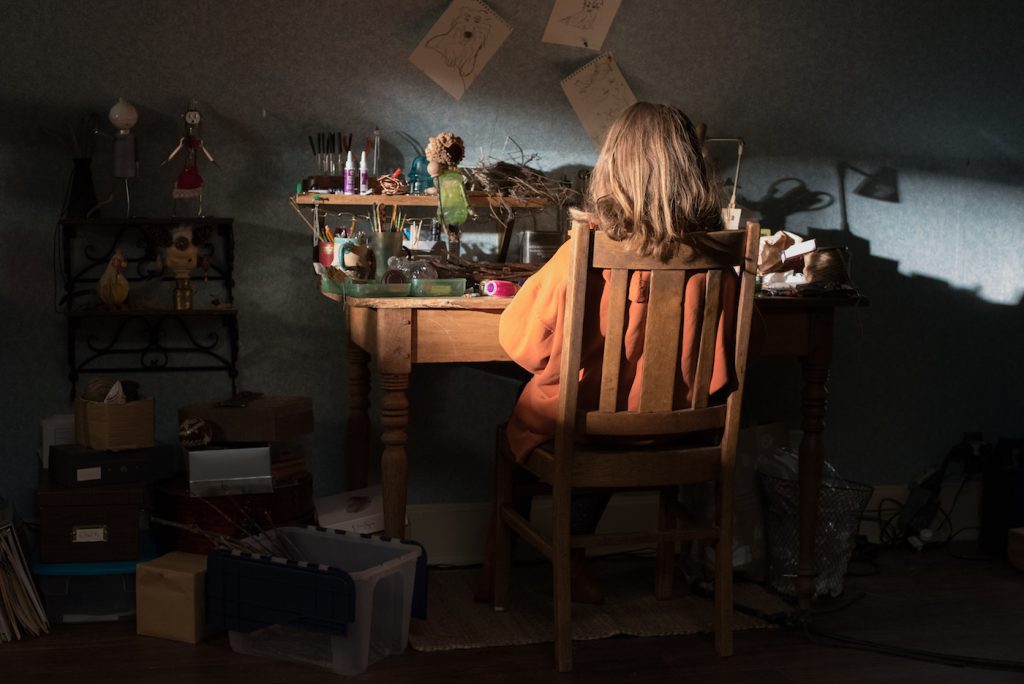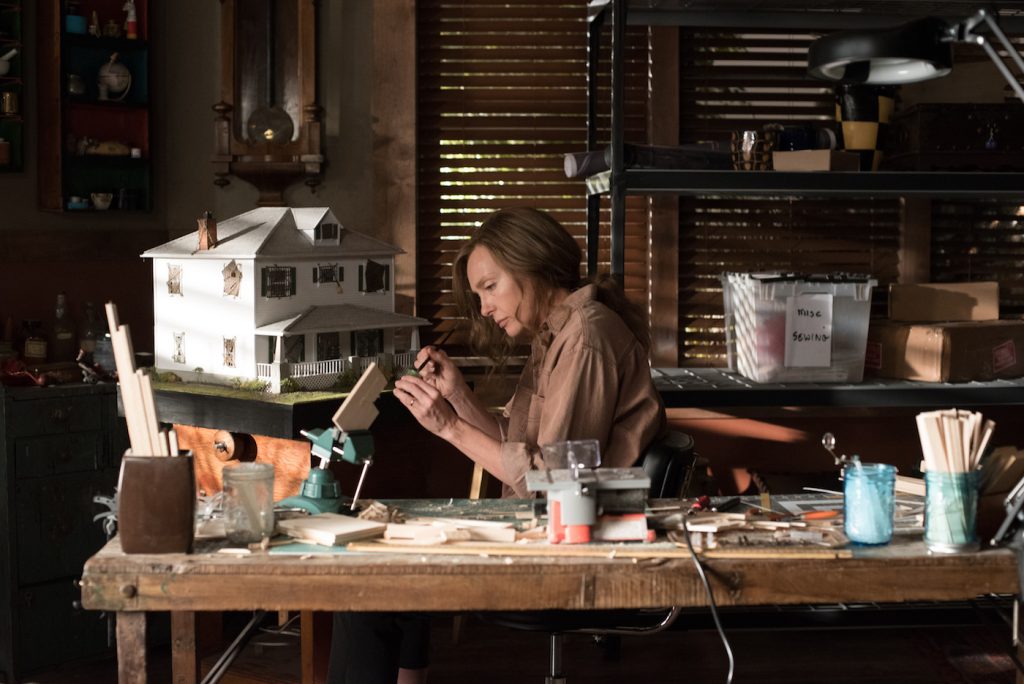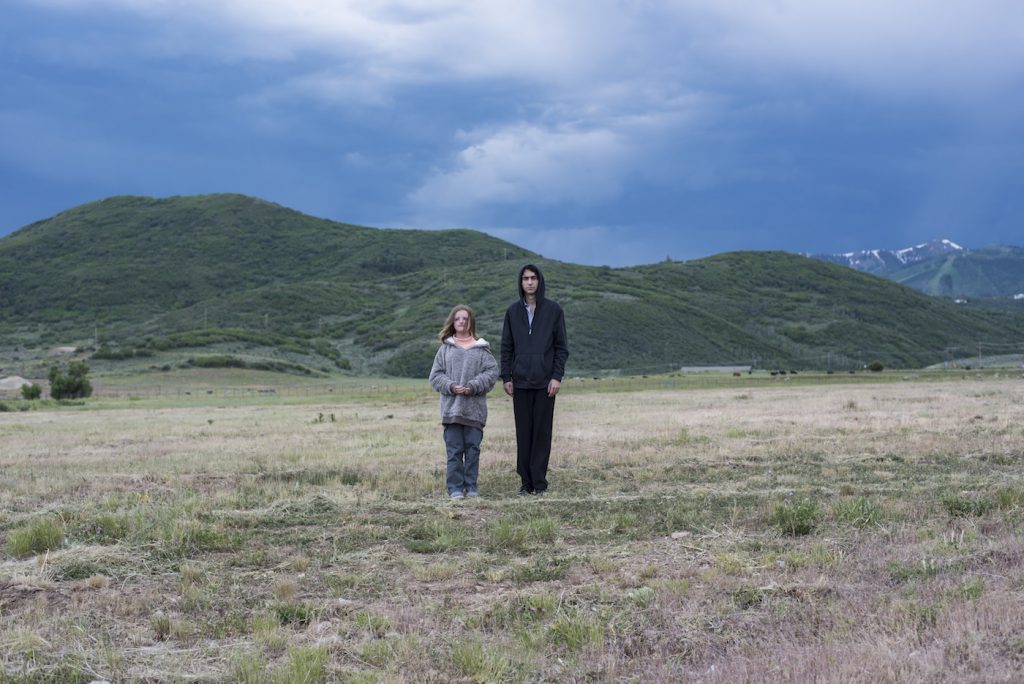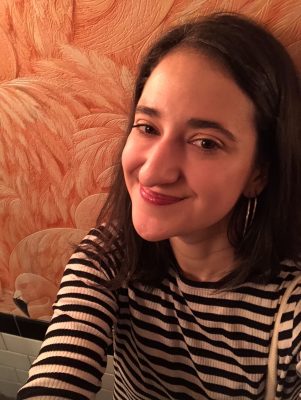Hereditary‘s Production Designer on Building the Scariest Movie of the Year
This is no exaggeration: Hereditary is the scariest movie in years and sure to become a horror classic. Writer/director Ari Aster brings a horrific tale of how we might just be unable to escape our familial bonds. He tells this through the Graham family—when Ellen, the mother of Annie Graham (an Oscar worthy Toni Collette) dies her private presence begins to haunt the whole family through her things, her secrets and perhaps even her spirit. It’s a film that’ll constantly throw you through for a loop until you are a quivering, teary blob at the end.
One of the main reasons Hereditary works so is the brilliant way the production design bestows even the most mundane objects terrifying significance. Production designer Grace Yun, who has previously worked on First Reformed and Beach Rats, had the task of helping turn a home into something deeply sinister. And on top of that, creating the very meta miniatures that Collete’s artist Annie is working on. The Credits talked to Yun on the phone about the genius of Ari Aster, building a whole house for Hereditary and being terrified to see the final cut of the film.
So how did you get involved in this wild, terrifying film?
My agent sent me the script and I read it and I really loved it. I was reading up to that moment and I had to step away. Literally, I stepped away from my desk and was just like, oh my god. I was alone at home, so I was spooked.
I just felt like it already started off strong with the characters and the family dynamic, and then once it started going full-tilt craziness, I was just like, wow. I was just like, I really need to meet Ari [Aster] and just pick his brain to see what type of director he is. I had a cafe meeting with him and he’s one of the sweetest, loveliest people. We sat down, talked about the script, talked about past work and had a great conversation that flowed naturally and we got kicked out of the cafe. No, really, they were like, we’re closing now.

What was it like collaborating on something that was so intricate design wise?
We just dove into it. I started sketching things and we started talking about concepts and ideas and characters. As I was talking to him, I felt like, wow, this is a really heavy, design-involved project and it’s daunting but also really exciting. Ari loves production design, he was very involved in all the decisions, and we worked really closely together just developing motifs in the film and character production and color stories. There’s so many moments to choose where I felt that creative synergy with him. It was a very exciting, challenging but exciting job. Probably one of the most remarkable things about that job was that I got to design and build an entire house and along with treehouses and… what a dream, right?
You built the house! What was that experience like? It’s so interesting because I feel like it really goes from a place that feels so homey in the first half of the film to that then becomes so sinister. How do you go about creating that tension within like one space?
Great question! Ari didn’t want to go in the design way of a horror film having lots of grey and decrepit, crumbling walls. He wanted it to feel a bit more real. He wanted it to feel more acceptable, and I just love that idea and I admitted to him that I’m not versed in the horror genre, and he was like, that’s great. I was coming from an ignorant place, but he wanted to utilize that. In terms of establishing a middle, upper-class homey feel, and then knowing that’s going to transform into this prison in some ways. We talked about how the house itself is linked to any psychological, emotional state and how the house is linked to the miniatures and her work. I just kept thinking since I know that we’re gonna have a lot of specific moments shooting into the miniature version of the house, I started thinking about dollhouses and how each room feels distinct. Each room has this unique color or wallpaper or shape. That’s gonna easily tie into when you’re watching it. In some ways, I was trying to ride the line of reality, make it surreal but also add to this dollhouse concept of Annie’s room trapped in her own creation. We talked about that and, actually one of the concepts for the miniature for her previous work—there’s two miniatures in the foyer, there’s one by the stairs.

The stacked ones!
Yes! That came out of a conversation we were having about Annie’s previous work. It was an idea of the house like this spiritual arena, and it’s like the ground is sucking up any kind of goodness or home life. That’s why it’s like three different homes from three different eras, so you’re going back in time in history, they’re part of this triangle and this cycle of things that they are fated or stuck in. We were talking about that concept and how to represent that in her previous work, so it would always be in the foyer. For Annie, when she doesn’t have her radar on of like, something’s weird, like when that plot point turns, we were thinking before that she still feels kind of psychologically trapped by her mom.
By the way, Ari sent me a multi-page precursor of the history of what happens before. I was like, Ari, this is another movie! It’s the prequel to Hereditary that I want to see. It was really amazing, really well thought out. I’m kind of digressing, but with the house, Pav [Pawel], Ari and I had a lot of discussions and I was thinking that if we used color as a signifier and if we used color saturated enough that it plays into the dollhouse concept, but also doesn’t necessarily feel sinister. Talking with Pav, I’m gonna choose colors that are saturated but are in this mid- to dark-tonality so they have these undertones of blacks and greys, so when the lights are off, it’s very dark. That was how the color scheme came about and also the use of green. Originally the script was during winter, but by the time when we were gonna shoot in Utah it was spring, and it gets very, very luscious and very, very green. So Ari and I were like, why don’t we embrace the green? It’s almost like this awakening for these spirits that are coming, so kind of using the green as saying something is erupting from the earth and blossoming. Not necessarily a good thing, but…

Would you work on a horror movie again if you had a chance?
I would work in any genre, so long as I feel like the script has meat to it and I feel like the director has a vision. That’s the ideal situation for me.
Have you seen the finished cut of the film?
I haven’t yet, but I’m gonna see it and then see Ari, who I haven’t seen in so long.
I’m curious about how it’s gonna be for you to watch, especially reading the script and being so scared by the script in itself.
I’m excited and I’m nervous. I’m bringing my husband and he’s almost like, I don’t wanna go!
Hopefully you guys can make that prequel!
Well, I mean, he has an incredibly prolific mind, I will tell you that. I am sure that there is a ton more content, and I hope we get to see that.
Featured image: Milly Shapiro, Toni Collette, Gabriel Byrne, and Alex Wolff. Photo by James Minchin, courtesy of A24



